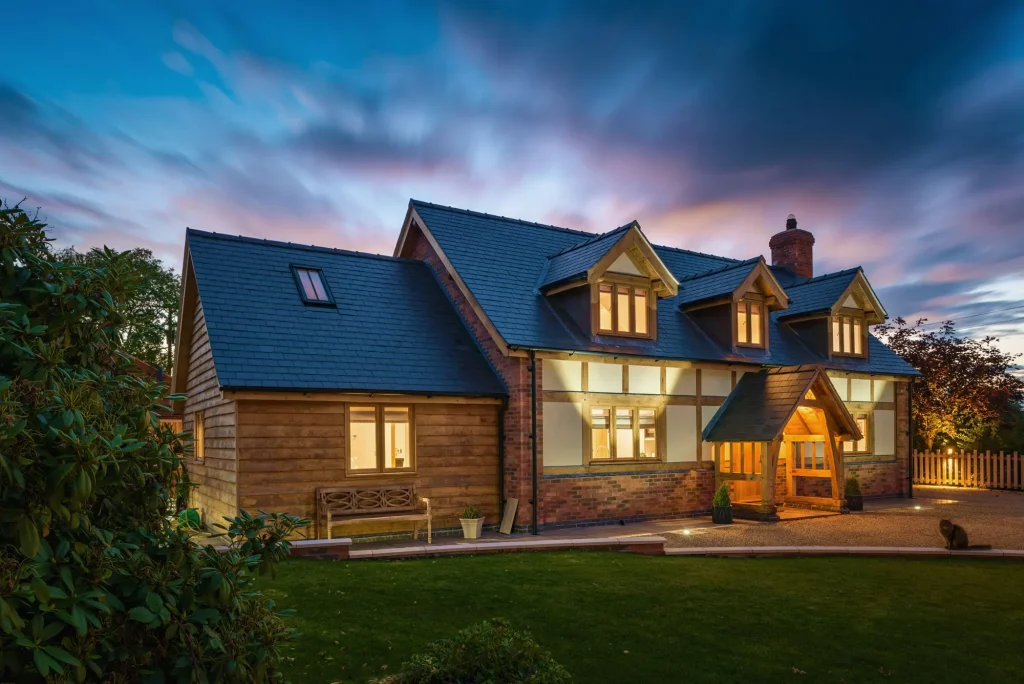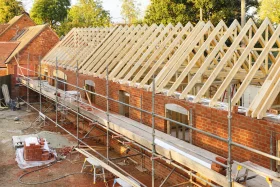
Learn from the experts with our online training course!
Use the code BUILD for 20% off
Learn from the experts with our online training course!
Use the code BUILD for 20% offA new Help to Build equity loan scheme opens to applications in England on 27th June, designed to enable more people to easily fund their self build or custom build home project.
Help to Build will make commissioning your own home an affordable, accessible and mainstream choice for those with smaller mortgage deposits.
Following hot on the heels of Richard Bacon MP’s review of the self and custom build sector, Help to Build has the potential to be the cornerstone of a wide-ranging package of measures to deliver more choice and quality through self build and custom build housing.
Opening to applications on 27th June 2022, Help to Build will enable people with smaller savings (the minimum deposit will be 5%) to access self build finance.
Unlike conventional mortgages, self build finance pays out in stages linked to the progression of work on site – so you know you’ll have the money when you need it.
A standard self build mortgage currently requires a deposit of around 15%, so Help to Build significantly lowers the entry barrier to creating an individual home. It achieves this by offering government-backed equity loans of up to 20% (or up to 40% in London) to boost your own deposit.
The scheme is inspired by the Help to Buy, which was aimed at those looking to purchase new developer-built housing.
Government expects Help to Build will enable delivery of up to 40,000 new custom and self build homes each year. That’s a big increase compared to the 13,000 currently completed per annum.
The scheme is currently slated to be available for four years.
The Help to Build equity loan is available for self build, custom build and conversion projects. Eligible projects include:
You can only use the loan to build one home, and it must be your primary home. You cannot use Help to Build to renovate an existing house you own.
The size of the equity loan is based on the estimated costs to buy your specified plot of land and build your planned home.
Your total budget for the land and build must not exceed £600,000. The cost of the build itself is capped at £400,000, and you must complete the project within three years.
Self builders can borrow between 5% and 20% of the land and build costs (or just the build) under the Help to Build equity loan scheme.
So, if your total budget was £400,000, your equity loan could be up to £80,000.
If you are building in London, you can borrow up to 40%; so £160,000 on a project cost of £400,000.
You can apply for a standard self build mortgage via a Help to Build-registered lender. The equity loan itself is then paid out directly to your lender after the build is complete, at the point your self build mortgage switches to a standard repayment mortgage.

In 2015, Build It readers the Holdens completed this characterful self build cottage at a total cost of £415,000, comprising £165,000 for the plot and £250,000 for the construction phase and fit-out
For example, if you were to build a house for £400,000, you could put down a 5% deposit of £20,000, with the remaining £380,000 (95%) provided by your self build mortgage lender.
You can then access the Help to Build loan of up to 20% (£80,000 in our example) when the house is finished. This pays off part of your self builder mortgage – so, in effect, your lender provides a smaller mortgage (£300,000 in our example above).
DOWNLOAD THE HELP TO BUILD CUSTOMER GUIDE
To access the equity loan, your or your lender will need to arrange for a RICS surveyor to value the house when the project is near completion. Once you’ve had this valuation, you will need to confirm whether you want to accept your Help to Build equity loan.
“Lenders are uniquely able to offer low-deposit products under Help to Build, and therefore provide consumers with a bigger mortgage than they might have had, because they know they will be paid 20% by the government on completion,” says Andrew Baddeley-Chappell, CEO of the National Custom and Self Build Association (NaCSBA).
Darlington Building Society has partnered with Homes England and BuildStore as the first lender to launch Help to Build mortgages for self build homes.
Winner of 2021 Build It Award for Best Self Build Lender, Darlington is offering two products at launch. These are both three-year discount Help to Build mortgages (at rates of 5.39% and 5.99%).
Build It understands eight more self build lenders are in the process of signing up to the Help to Build Scheme. The old Help to Buy (which was for buyers purchasing developer-built houses) also had a single lender at launch.
You can apply for the government-backed equity loan scheme if you:
You can access Help to Build whether you are a first-time buyer or an existing homeowner. However, you may not apply if you’ve had a Help to Build equity loan within the last two years.
The Help to Build equity loan is interest-free for the first five years. However, there is a management fee of £1 per month until the loan is repaid.
From year six, you will start to pay interest on the loan. This will start at 1.75%, and then rise by a minimum of 2% plus CPI (consumer price index) from year seven onwards.
Importantly, the total amount you pay back is based on the market value of your property at the time you choose to repay (not the original amount you borrowed). This includes the land and house value (even if you didn’t borrow to purchase the plot).
So, if the value of your home rises or falls, the total amount you owe will change. Assuming the market continues to rise over time, most people will pay back more than they borrow.
You cannot repay the equity loan in regular monthly payments; instead this can be done in part (provided you pay at least 10% of the market value of the house) or in full at any time.
However, you must repay the equity loan in full when you come to the end of the loan term, sell your home or finish paying off your standard repayment mortgage.
Easier than you might think. According to an article in The Times, research by NaCSBA and property portal Zoopla has found £600,000 would cover the plot and construction cost for a four-bed house in two-thirds of England.
The research also found that, under Help to Build, a joint income of £40,000 would enough to gain sufficient finance for a three-bed house in a third of England’s areas.
In Build It’s experience, many self builders complete the construction phase of their projects for significantly less than the £400,000 Help to Build cap. Just check out these stunning bespoke homes built for under £200,000.

Terry Brown-Waite put in a lot of his own labour to complete this wow-factor, 151m2 self build home at Graven Hill for a build cost of just £234,000
If you’re running towards the high end of the Help to Build cap, the trick will be ensuring you keep within budget. That starts with ringfencing a decent contingency (typically 10-15%) to deal with issues along the way.
You may also wish to explore the most cost-certain routes to a bespoke home, such as a fixed-price custom build, shell house or turnkey package. “Help to Build is a particularly good fit for the custom build market,” says Andrew Baddeley-Chappell.
“The Help to Build scheme is a dream come true for many would-be self builders, and we’re in full support of the initiative. The UK is finally moving in the right direction as we continue to revolutionise the housing market. Gone are the days of self and custom building being for the few – we are thrilled to see it become an option for the many.
Self and custom building have always been popular at Graven Hill, and we expect to see interest continue to increase as a result of the scheme. In the current climate, the financial support that Help to Build will provide has never been more welcome.
Help to Build now means there is even more opportunity for all homeowners to create a home that’s tailor-made to their needs.”
“The launch of the Help to Build prospectus is another important milestone for custom and self build homes. Help to Build is important because it opens up custom and self build as an option to those with smaller budgets and in particular smaller savings.
However, access to finance is just part of the answer. The key constraint is access to land with permission to build. This challenge is being addressed in part through the Right to Build legislation, which requires local authorities to ensure enough plots are permissioned to match the demand on the registers that they operate.
However, some local authorities have been too slow to respond to the legislation, and it is important that they do more, not least to respond to the increased demand following the launch of this scheme. This is why the government’s response to the Bacon Review and the ongoing funding to the Right to Build Task force are important pieces in a wider plan.”
Built for £170,000, this bespoke timber frame property by Frame Technologies is finished in bricks and topped with a Welsh slate roof. Photo: Camilla Reynolds
This article was originally written in November 2021 and was updated on 24th June 2022 to reflect the formal launch of Help to Build.
